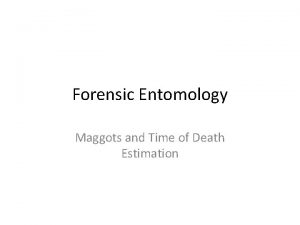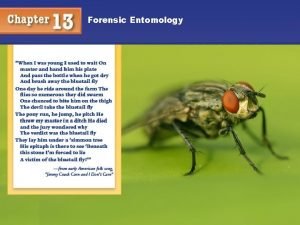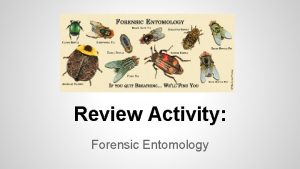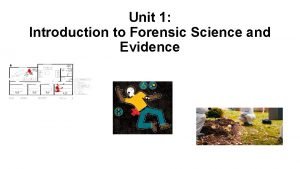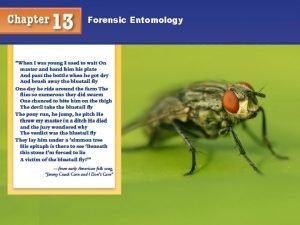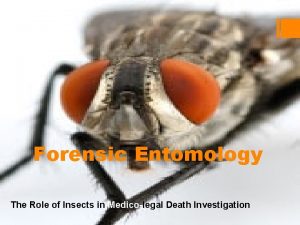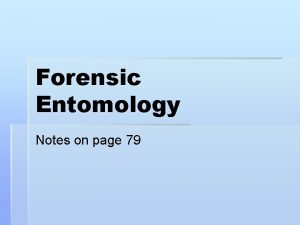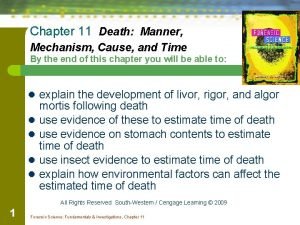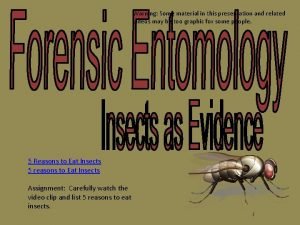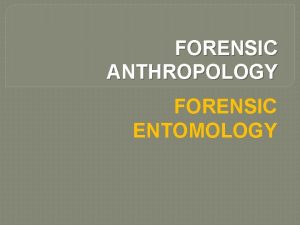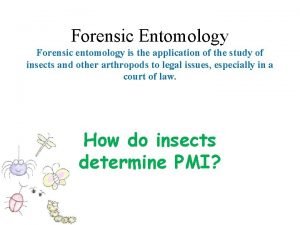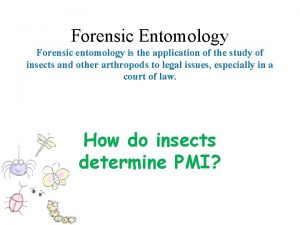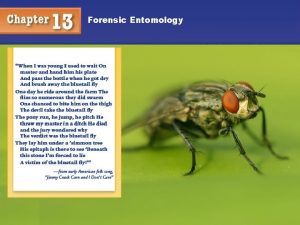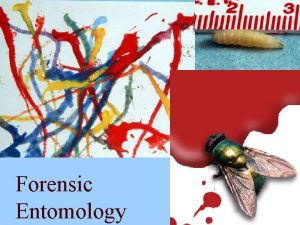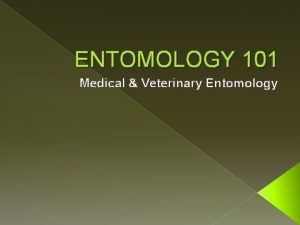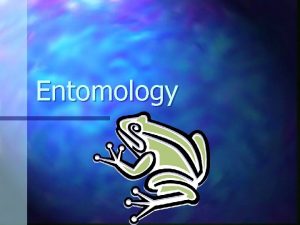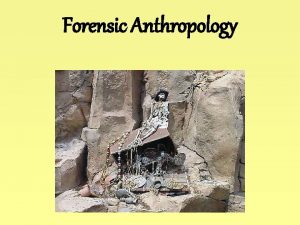FORENSIC ENTOMOLOGY What is Forensic Entomology Forensic Entomology












- Slides: 12

FORENSIC ENTOMOLOGY

What is Forensic Entomology? Forensic Entomology is the use of the insects and other arthropods that feed on decaying remains to aid legal investigations. Medicolegal (criminal) Urban (criminal and civil) “legal proceedings involving insects and related animals that affect manmade structures and other aspects of the human environment”

Forensic Entomology is Applied Biology If it weren’t for decomposition of all living things, our world would fill up with dead bodies. When an animal dies, female insects will be attracted to the body. They enter exposed orifices or wounds and lay eggs or larvae. A forensic entomologist: identifies the immature insects determines the size and development of the insects calculates the growth of the insects and passage through stages of the life cycle in laboratory compares the growth against weather conditions to estimate time of oviposition

Medicolegal Forensic Entomology Often focuses on violent crimes a. Determination of the time (postmortem interval or PMI) or site of human death based on identification of arthropods collected from or near corpses. b. Cases involving possible sudden death c. Traffic accidents with no immediately obvious cause d. Possible criminal misuse of insects

Postmortem interval (PMI) Forensic Entomology is used to determine time since death (the time between death and corpse discovery) This is called postmortem interval or PMI). Other uses include movement of the corpse manner and cause of death association of suspects with the death scene d. detection of toxins, drugs, or even the DNA of the victim through analysis of insect larvae. a. b. c.

Succession of Insects on the Corpse Estimates of postmortem intervals based on insects present on the remains are based on: 1. The time required for a given species to reach a particular stage of development. 2. Comparisons of all insect species present on the remains at the time of examination.

Ecology of Decomposition Necrophages - the first species feeding on corpse tissue. Includes rue flies and beetles. Omnivores - species such as ants, wasps, and some beetles that feed on both the corpse and associated maggots. Parasites and Predators - beetles, true flies and wasps that parasitize immature flies. Incidentals – pill bugs, spiders, mites, centipedes that use the corpse as an


Decay Rates Are Variable Studies of decay rates of 150 human corpses at in the Anthropological Facility in Tennessee (The Body Farm) Most important environment factors in corpse decay: a. Temperature b. Access by insects c. Depth of burial Other Factors d. Chemical-- embalming agent, insecticides, lime, etc. e. Animals disrupting the corpse

Differentiate between PMI and Time of Death These may not always equate. Post mortem interval is restricted to the time that the corpse or body has been exposed to an environment which would allow insect activity to begin. a. Closed windows b. Body in box or bag c. Cold temperatures d. Deeper burial

Insect species arrive at a corpse in waves like clockwork 1. Calculate the heat/thermal energy (accumulated degree hour) required for each stage of the Green Bottle Fly’s life cycle. 2. Possibly the greatest potential source of error in using arthropod successional patterns lies in the collection of specimens. 3. Must only be done correctly to accurately sample the insects.

Calculating PMI from Accumulated Degree Hours (ADH) From To Egg 1 st Instar Temp Hours ADH Cumulative ADH 70° F 23 23 x 70= 1610 ADH 1610 1 st Instar 2 nd Instar 70 ° F 27 27 x 70= 1890 ADH 1610+ 1890 2 nd Instar 3 rd Instar 70 ° F 22 22 x 70= 1540 ADH 1610+1890+ 1540 3 rd Instar Pupa 70 ° F 130 x 70= 1610+1890+ 9100 ADH 1540+9100 Pupa Adult Fly 70 ° F 143 x 70= 1610+1890+ 10010 ADH 1540+9100 +10010
 Definition of forensic entomology
Definition of forensic entomology Body parts of housefly
Body parts of housefly What does pmi stand for forensic entomology
What does pmi stand for forensic entomology Examples of transient evidence
Examples of transient evidence Forensic entomology examples
Forensic entomology examples What is it
What is it Pro corbis
Pro corbis Medicolegal forensic entomology
Medicolegal forensic entomology Forensic entomology notes
Forensic entomology notes Chapter 11 forensic entomology
Chapter 11 forensic entomology Crime solving insects case studies answers
Crime solving insects case studies answers Pathologist and anthropologist
Pathologist and anthropologist Forensic psychiatry vs forensic psychology
Forensic psychiatry vs forensic psychology
